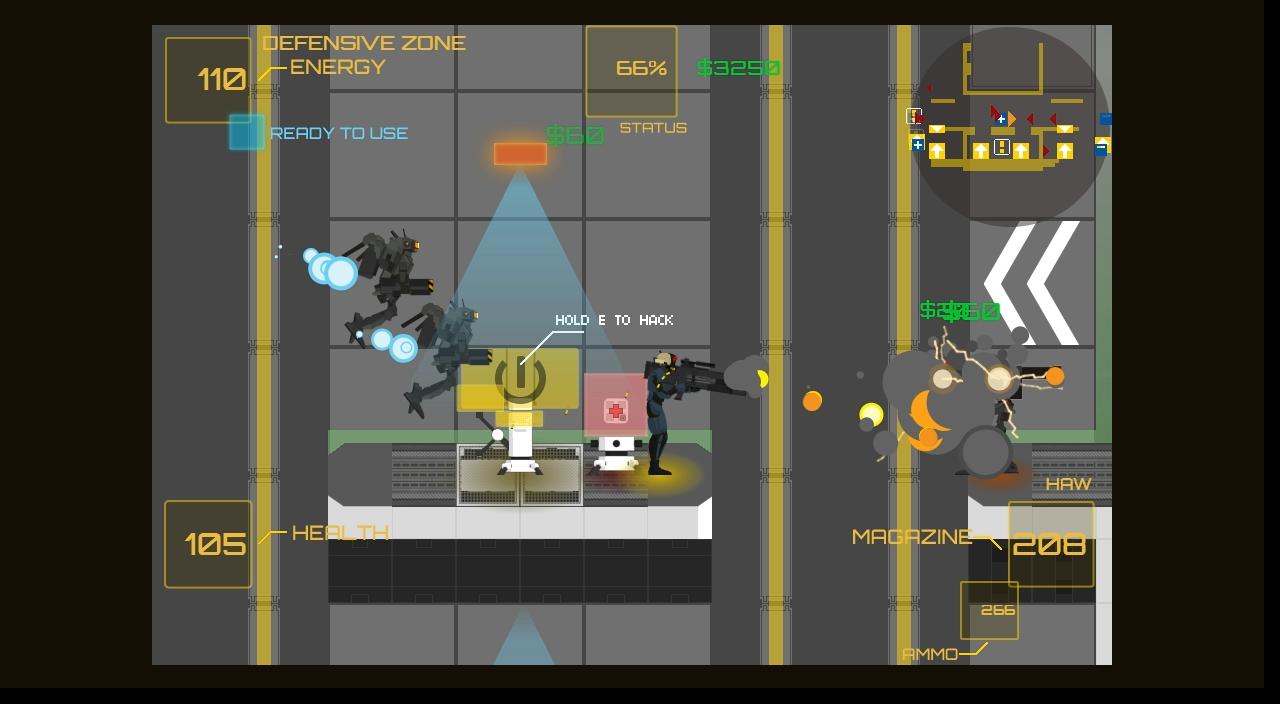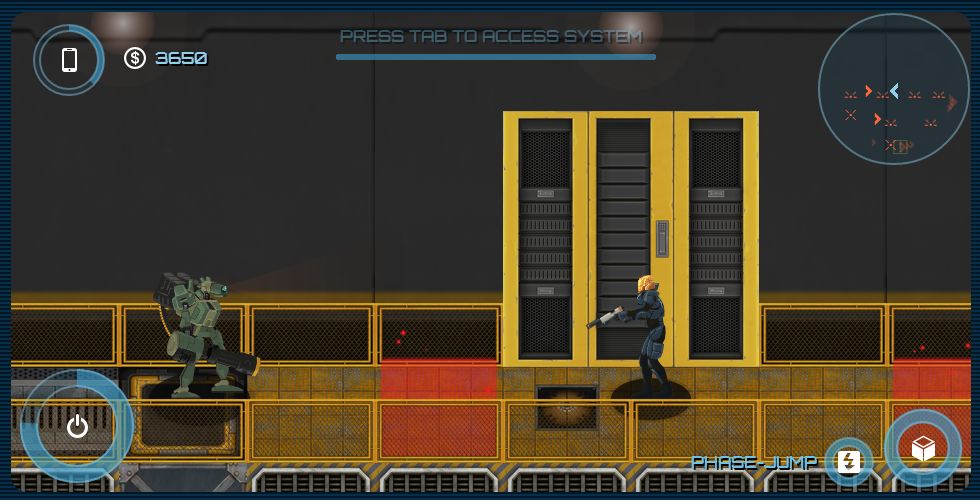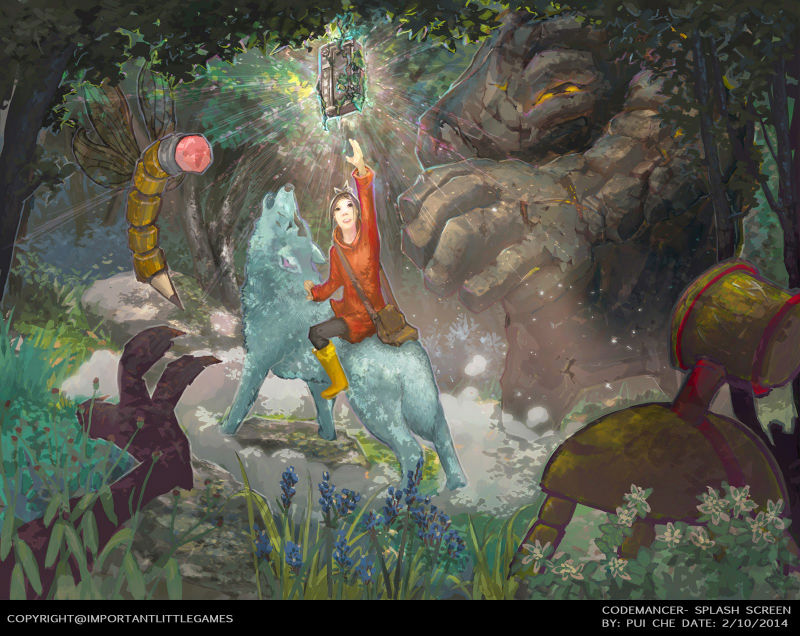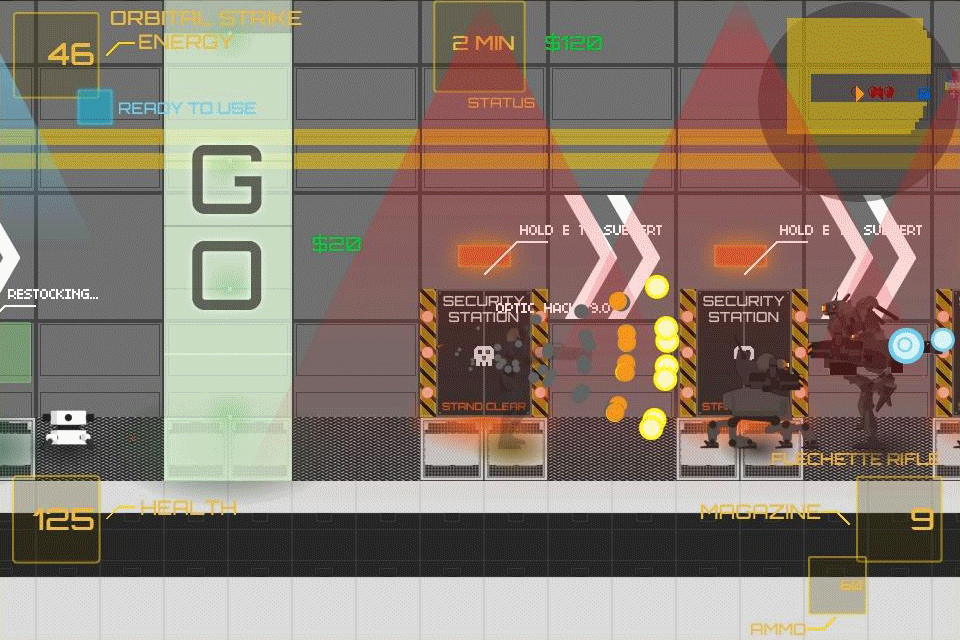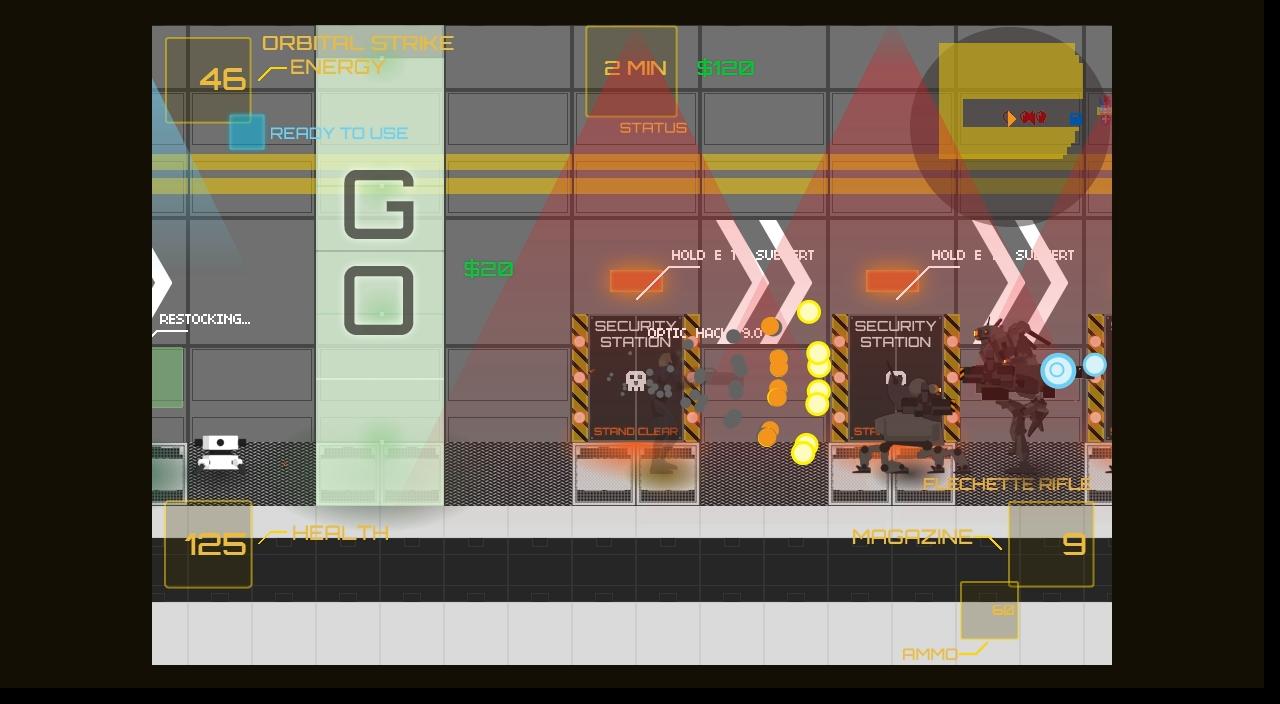Searching for Blue Oceans – 10 Digitop Ideas
“Devise plans to escape encircled ground” – Sun Tzu
“Blue ocean strategy is the simultaneous pursuit of differentiation and low cost to open up a new market space and create new demand.” – Blue Ocean Strategy (Mauborgne & Kim)
However you phrase it, success in business and battle is often found in being where your competition is not; finding the ‘Blue Oceans’ proposed by Mauborgne & Kim (opposed to ‘Red Oceans’ where companies compete for a limited market/territory). Usually I try to find Blue Oceans in wild new territory, such as game ideas for brand-new devices or technology, but for this post I’m going to suggest creating a Blue Ocean at the intersection of two well known concepts.
The new XCom board/digital game just came out, and by all accounts it seems pretty fun (http://www.rockpapershotgun.com/2015/02/03/xcom-board-game-review-1). It’s a good example of a ‘Blue Ocean’ product being created at the intersection at digital and physical. Let’s consider removing the distinction between ‘video’ and ‘tabletop’ and leverage the tools to create new & improved experiences. To get it started, I’ve thought up 10 more ‘digitop’ ideas. (FYI – I’m waiving any claim to these ideas right now; I don’t plan to build any of these in the near future, so feel free to use them as you please!)
10. Point Tracker – Lots of tabletop games require the players to keep track of points via pencil/paper or markers on a track. Make it simple with the point tracker app (could be a generic app, or branded for a specific game).
9. Virtual Shuffler – lots of tabletop games use a deck, or multiple decks of cards. They can be a pain to shuffle. Virtual Shuffler is an app that creates virtual decks for a game that can be displayed on a digital device – one deck for smaller screens, multiple decks for bigger ones – and shuffling becomes as easy as pressing a button. When a player draws a card from the virtual deck, they take the corresponding physical card.
9. Virtual Joker – Add variety to a game with a dynamic joker card. Insert a blank placeholder card or designate a specific card as the Joker. Then the app assigns a new random card to the Joker. Leave the device in the middle of the table so all players know what the card does. New cards can downloaded/purchased to add more variety.
8. House Rules – Create your own rules to fix shortcomings in games or improve them. House rules saves your new rules and allows anyone with a mobile device to review them. House rules is location specific, can remember rules for different games, and can even suggest popular rules for you.
6. Personal Leaderboard – simple app that tracks winners of games and optionally points, over time. Use it to see who is the reigning champ at any game! Could include graphs/time slices to track trends over time.
5. Handicap Randomizer – app to provide randomized handicaps for players. Great when playing with new or younger players. Handicaps level can be customized and are randomized so advanced players don’t get bored.
4. Bot-Buddy – Randomized AI buddy for games. Can be used when you’re short a player. Won’t necessarily work with every game and won’t necessarily be a great replacement for players, but can fill in for a pinch.
3. Grandmas Little Helper – a quick helper for people that seem to always be losing. Might take some inputs from the game (e.g. What character/race are you playing?) then suggest strategies (e.g. try building the longest road) with guidance on how to achieve it. Could also have a FAQ section (I’m always out of gold! How do I fix this?).
2. Blitz – an app to help speed up slow games (e.g. Risk). First, set the time you would like to play for. Based on the time, Blitz will set a turn timer to keep play moving, and also adds rules to accelerate play as time runs out (e.g. kill 2 armies per battle, everyone loses 50 armies this turn). When time runs out, Blitz provides rules to declare a winner even if the final game state has not been reached.
1. Campaign Tracker – for those who play a lot of games w/a group of friends, campaign tracker lets you run a meta-game outside the games. Lots of ways to implement this – could be configured for tournament format or seasons/playoff format. Could provide additional rulesets based on the point in the campaign (e.g. it’s now winter, you start with half food). Could even be built to support multiple games (Your money in Monopoly funds your initial armies in Risk).
Hope you found some value in my brainstorming and hope these ideas provided you inspiration for your own digitop ideas. Finally, in closing: whenever you feel encircled by your competitors, I encourage you to step back and find your own Blue Oceans in unconventional places.
The Gametrepreneur Ten: Reasons Chicago is a great place to build games
Quote
Welcome to the first episode of the Gametrepreneur Ten! This is a companion piece to the Chicago Gametrepreneur Show – we’re going to try make this semi-regular feature where we dig deeper into into a topic we discussed on a recent podcast.
On our last pod, we talked with Rob Zubek about why Chicago is a great place to bootstrap your game studio. Here’s our inaugural list of ‘Reasons Chicago is a great place to build games‘:
10. Low cost of housing – means you can live in a real apartment for a reasonable price, or a tiny apartment for almost nothing.
9. Great sources of inspiration – Chicago has fantastic architecture, great museums and a thriving music & theater scene. Whatever your preference is, it’s easy to find something to inspire your creative endeavors.
8. Extensive public transportation – means you can get around without a car, saving you on car payments, insurance, gas and car repairs.
7. Lots of talented people – access to graduates from local schools (Northwestern, University of Chicago, DePaul, Illinois, Purdue, etc.)
6. An extremely friendly and open community! Get connected through IGDA Chicago & Indie City Games
5. Affordable and fun shared working spaces – programs include the Indie Co-op, 1871 and SpaceLab1.
4. Easier and cheaper access to local conventions – BitBash, Chicago Ideas Week & C2E2
3. A good freelance economy – means you can make ends meet while you work on your Indie Masterpiece
2. Community that supports building studios organically and sustainably – most members of the community want to build companies so they can make games for rest of their lives.
1. Free to do your own thing – with fewer huge studios, there is more incentive and support for talented individuals to strike out on their own and make their unique impact on the gaming world.
The path to victory starts from your cubicle
As it turns out, you didn’t manage to make a dump truck of money on your 1st/2nd/nth Indie game. Turns out rent and bills are a thing you have to deal with. Turns out you might have to spend some time at a real job. And that’s great.
Releasing an indie game will be the hardest job you’ve ever loved. It will test you in every aspect – mentally, emotionally and physically. The competition will be fierce and unrelenting. But your day job has given you a hidden advantage – extra time to practice and train. Here are 10 exercises that you can do, right now, in your cube/workspace/subway to prepare you when the time comes. And as a bonus, they will probably make you better at your day job as well:
10. Look at some art – find what kind of art inspires you and what kind of art you would like to create or emulate. Find more work like it. Find artists that have a similar style. Learn how that art is created. Even if you’re not an artist yourself, it’s important to appreciate and understand the process.
9. Practice being healthy. When you’re stressed it’s easy to eat terrible things, skip exercise and become a chronic insomniac. But nobody can do their best work when they’re sick (or really, any good work). Practice now so you’re prepared when stress hits.
8. Practice organization & efficiency – whatever you do, study how to become better at it. Learn to recognize where you’re being efficient and inefficient. Leverage tools that make your job easier. Seek out new techniques to make your job faster and easier. Once this becomes second nature, you’ll be able to apply it everywhere.
7. Find good people to help you – doesn’t necessarily mean finding your coder/artist/soundfx team. Seek out people that do interesting things. Find people smarter than you. Find mentors. If you’re a risk taker, find a risk averse friend; if you’re risk averse, find a gambler. Find people who will support you; find people who can give constructive criticism. You will need all of them.
7a. Learn how to help others. Find out how you can provide value to them. Learn how to give without expecting anything in return. I hate the term ‘networking’ because networking is shallow. If you practice building deep relationships by being the source of value, you will never find yourself without help when needed.
6. Practice generating ideas (borrowed from @jaltucher). James calls this ‘exercising the idea muscle‘. Whenever you’re bored at work, think about something your game/company will need. A shooter needs weapons, a RPG needs enemies, marketing needs promotions, etc. Then try write down 10 ideas for that something. If you’re still bored, pick an idea you made and write down 10 variations of that. For example, I could try write 10 things about how you help others. Work out your idea muscle every day.
5. Practice learning. A lot of people don’t practice learning new things once they leave school. It’s hard. It scares us. But you will have to learn a hundred new things before you release your game, so make yourself good at learning now.
4. Locate your center. Understand what motivates you. Understand what things can take that motivation away. Figure out your ‘WHY’ because it is the soul of your company. Write it down. Ask your friends what they think. Figure out what your culture should be, because culture eats strategy for lunch. Building a strong sense of ‘WHY’ now you will allow you to make the right decisions later.
3. Practice writing. Practice writing blogs, practice writing tweets, practice writing instruction copy. Practice being funny and being serious. Practice being quotable. Practice being the voice of your culture and mission. Practice writing things that scare you. Try to write and publish something every day.
2. Practice falling. It’s the first thing you’re taught when you learn how to surf. Make mistakes without hurting yourself; learn from your mistakes. Release something bad and ignore the trolls. Take a mistake, write about it, and share the knowledge with the world. You will make mistakes building your game; learn to fall so you can get up.
1. Learn how to be a leader. Not a manager, but someone people look to for leadership.You can be the lowest on the totem pole and still be a leader. Learn how to eat last and take blame first. Learn how to take responsibility. Learn how to be a do-er. Learn how to trust your people. Everyone at a startup becomes a leader, whether it says so in your title or not.
Finally, remember what Sun Tzu taught -“Victorious warriors win first and then go to war, while defeated warriors go to war first and then seek to win.” The path to victory starts from your cubicle.
Interstellar and Indie Games; The Risk and Thrill of Exploration
This article contains light spoilers about Interstellar – I enjoyed the movie but this is not a review; it does contain a lot of my unqualified opinions.
Interstellar begins on a dying earth, where the remaining humans struggle to farm enough food to keep themselves alive. There is a moment when Matthew McConaugheys character Cooper states – “It’s like we’ve forgotten who we are…explorers, pioneers, not caretakers …we’re not meant to save the world. We’re meant to leave it.” It’s a frightening, idealistic and inspiring moment; it reminded me why I chose to make indie games.

Indie gaming has always been treacherous ground. To make an indie game is to embrace the unknown, the chaos of independent software development and business. There is no easy money, no established IP to fall back on, no machine to cover up the failures of development. Each delay can be unbelievably costly; finding your own path can be overwhelmingly lonely. For the vast majority the financial rewards are nearly nonexistent. I stood in front of a panel at the 2012 PAX convention and just asked “Is it worth it?”.
It is a difficult question to answer. Beyond the simple opportunity cost of not taking a steady income with a large company, there is the issue of time. In Interstellar, time becomes a valuable resource; we need to consider it the same way. Time is arguably our most precious resource, as every human being is given a finite amount and no way to create more. Every minute an indie developer spends building their game is an investment of this limited commodity. And when a game fails, the cost is not just in money, but in hours spent and never returned.

My personal answer follows that ideal from Cooper – that we were meant to explore, not to just preserve. Right now, at this very moment, it has never been easier or faster to build your own game; never been easier to push the boundaries and limits of what a game is, what it can do, who it can touch and the message it can deliver. We are in uncharted territory, and there is nothing more exciting than being the first to explore it. In a different conversation, Cooper remarks how some of the best solo yacht captains in the world don’t know how to swim – pushing the limits with no safety net. I’ve never been solo yachting before, but I remember feeling great excitement and crushing fear when I ran my Kickstarter campaign; the inherent stakes make indie development both exhilarating and terrifying.
We should not be so idealistic that we forget the risks involved. Many of us will fail. Most of our ideas will falter. In Interstellar, there is a mission that sends a group of the bravest astronauts on one way trips, only to report back data on their destinations with no hope of returning home. And we as indie developers spend much of our precious time on one way trips, endeavors that we will see no return on besides the learning we gain from them. We need to celebrate the bravery required by everyone who commits to a new endeavor, because the data we gain from every success and failure is purchased by our most precious resource, time. We learn what is feasible, what is difficult and together we move our art forward.
Indie gaming has never been easy or safe. We will struggle, we will make mistakes, we will fail. We will waste our effort, our money and most importantly, our time. But we have an opportunity right now unlike any other in the history of our medium. Gaming is changing – this old world is dying, and we must adapt. I make indie games because there are no signposts, no trails, and no fences here – we are free to be explorers and pioneers, to be the first humans to discover a new galaxy of ideas.
Post-Kickstarter Finance By The Numbers; A One-Man Studio Postmortem
Full disclosure is the primary purpose of this post. The backstory – in March of 2013, I ran a 30 day Kickstarter for my cyberpunk 2d shooter ‘Contract Work’; it finished just over it’s goal of $5000 with 110 backers. Although the campaign was a success, the initial public release was a dismal failure, selling only 3 copies (though many more people did play the game). This is a breakdown of the money numbers and thoughts on what worked, what didn’t, and what happens now.
Final Kickstarter Total: $5086
Cost from Kickstarter/Amazon/failed pledges: $4627 (-$459)
Taxes (rough estimate after deductions applied): -$500
Personal Development Costs (I only count costs for 2 months @$1000 a month for living expenses, see note below): -$2000
Material Costs, broken down as follows:
- Subscription to GameTextures.com (7 mo at $20/month): -$140
- Asset purchases from GameDevMarket.com: -$40
- MediaLoot & TextFX licenses (GUI assets): -$70
- Replacement Video Card: -$110
Hosting (dreamhost.com at $13/mo): -$234
Marketing (hiring a marketing firm, at discount): -$1440
Customer Acquisition (via Facebook): -$647
Freelance Artwork (multiple pieces): -$300
Freelance Content Creation (LetsPlay video): -$50
Total Cost through Sept, 2014: $5990
Total Revenue Post Kickstarter: $9.99
Note – I only count April & May of 2013 as time I spent working full-time on Contract Work while funded. I was laid off in Jan of 2013 and besides a little freelance work (~$1000 worth) I paid all my development & living costs out of pocket while planning & executing the Kickstarter. At the end of May 2013 with I started contracting which turned into a full-time job. I don’t the cost of my developing Contract Work while working full time (there is probably some associated opportunity cost).
The $1000/month figure for cost of living is very conservative. My rent alone is more than $1000, but I admit that I could have found cheaper lodgings (it would have taken time & money, and I hate moving). For that reason I feel that taking $1000 as my own ‘salary’ while using the Kickstarter funds is reasonable (the rest of my costs being paid out of pocket).
What Didn’t Work
Let’s start with the unhappy stuff. First the obvious – the marketing spend and customer acquisition didn’t result in the sales I was looking for. Importantly, I don’t blame the company I hired for my marketing campaign; they really did their best to raise awareness, even getting several articles published on bigger sites. But there was some serious cart-before-horse syndrome, as the game I was selling didn’t have good marketable points. Graphics? Meh. Concept and environment? Fuzzy at best. Gameplay? Disjointed, confusing at times.
Good marketing won’t save a half-baked title (in retrospect, the game really needed another 6-9 months of development time to shine). Ultimately I think the unreasonable time frame I set for myself (zero to commercial product in 9 months) doomed the marketing campaign from the start. Given the knowledge I have now, I would have avoided a traditional marketing campaign altogether.
The customer acquisition is more interesting. First, the Contract Work page has over 1,300 likes, which is not a bad for the spend ($0.50 per like). However, the likes have not translated to engagement or sales; it’s hard to determine whether that’s due to the quality of the fans or the quality of the game. The same goes for sales – the game has a decent number of plays, so the issue with converting plays to sales may lie more in the game/ purchase process than the quantity or type of player being directed to the site.
This has also created a standing community, albeit a quiet one. I remain hopeful that users can be engaged through quality content sharing and outreach, and am planning to try expand the community in the future through organic and paid ads. Another upside is that I’ve collected an e-mail list of about 300 addresses from players of the game that I hope to engage as well. There is definitely potential.
If I could do it all again, I’d wait until the game was in better shape to start my community, then spend a lot of time refining the purchase process before asking people to buy the game. I always feel the first part of good marketing comes from having a good product to sell.
A last note on some of the unhappy realities of Kickstarter – it sucks seeing 9-10% disappear instantly, but worse is not accounting for the taxes on the money later. I believe just about every state Kickstarter counts as personal income for tax purposes, so plan as such.
What Worked
In terms of ‘bang for buck’, the clear winners were artwork & assets. This will differ from team to team, but my skillset is primarily programming with some knowledge of art. Good art takes me a long time to create and therefore it’s almost always worth it for me to pay for art and focus on development. I feel I’m lucky in this regard – I can always move forward with placeholder art, while it might be more difficult to make progress without a reliable coding resource.
The GameDevMarket assets were the best value, but I’ve utilized the most assets (in term of raw numbers) from GameTextures. Both GameTextures and GameDevMarket are new resources that (to the best of my knowledge) did not exist when I finished my Kickstarter, but I’d expect more sites like them in the future.
My collaboration with a couple great art contractors (Pui Che and Tyler Johnson) has been nothing but delightful. Not only does it save me time but boosts my motivation every time they deliver a cool new asset. Many thanks to Robert Lockhart for referring me to these talented folks; obviously not everyone will be as good as these guys, but I feel that using personal recommendations goes a long way to finding like minded and talented people you want to work with.
I’ve also just started contracting with the talented team at P1PR to start generating content. They’ve finish an excellent first look ‘LetsPlay‘ video which has gotten good responses. Again, this is an area that requires a lot of effort and time on my part to generate quality content, so it’s a good investment in my opinion.
In general – figure out your weaknesses and use your resources to counteract them. For me the biggest time sink was art; investing more early could have saved me a lot of time and effort in the long run.
What Now?
I’m working on fulfilling my backer rewards now. Even though I didn’t offer any physical rewards, I did not budget enough time to finish the rewards in my original plan. I’ll also be co-ordinating with my contractors for the artwork tied to these rewards, so expect the cost for contract artwork to continue to rise. I’ll continue to utilize my team at P1PR to generate quality content to try engage my existing community, and use some ad spend to grow. Long term I plan to work on getting the game on Steam Early Access/Greenlight (if it still exists) as well as additional portals for distribution. But, as I’ve learned, it’s important not to get ahead of myself; the primary goal right now is to make Contract Work a great game to play.
I’ve had the enormous luxury to be able to get a head start on my game through Kickstarter funding and survive a bad launch by having a full time job. The time commitment sucks, but it has given the runway and resources to put the game into a state where it has a better chance to succeed. I also feel fortunate that I planned this as a one man endeavor; no one else was ruined by a terrible launch or bad planning. On the bad days I don’t have to worry about a crazy high burn rate. It can get lonely, but I know that as long as I stay motivated that Iterative Games won’t die.
Winston Churchill is quoted as once saying “Success is going from failure to failure without the loss of enthusiasm”. I might add that includes going from failure to failure without bankrupting yourself (too badly). So at the end of the day, even if I didn’t make a cent from my first release – Contact Work is still alive, I’m still getting the chance to do what I love, and I really can’t ask for more.
Many thanks again to my loyal and patient backers. I wouldn’t be here without you.
Asking Why
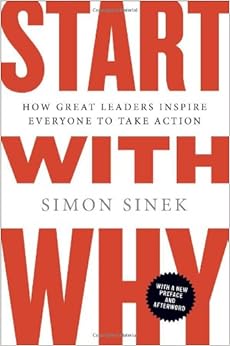
In Simon Sineks now famous TED Talk, he reveals a pattern among great organizations and leaders (if you haven’t seen it, it’s certainly worth the watch). He states that most people operate from the outside in – we have a clear idea of what we do, some idea of how we do it, but few can articulate why.
“But the inspired leaders, the inspired organizations, regardless of size or industry, act from the inside out…They know beyond a shadow of a doubt their purpose, their cause, why they get out of bed in the morning.”
This lead to the big insight – “People don’t buy WHAT you do, they buy WHY you do it.” The competitors may be just as qualified, but we choose the inspired companies because they inspire us.
It’s worth repeating. People don’t buy WHAT you do, they buy WHY you do it. Why this is so important for indies? Look at the market right now – most will agree we are at the end of the Indie Bubble (thoughts from people smarter than myself @spiderwebsoft, @tiedtiger, @gamesbrief).
The easy routes are gone – if your WHY was to make boatloads of fast money, stop reading and get out now. The indie game scene has grown into a market with hundreds of competitors, just like other industries. It’s not enough just to be an indie anymore – you need to convince your customers that you are the indie company they want to support.
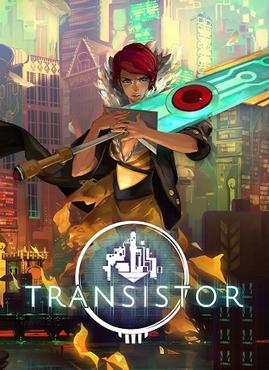
Transistor from Supergiant Games
So how does WHY work? Let’s consider an indie success story, Supergiant Games. Compare these two pitches for their title Transistor:
1. “Play a sci-fi themed action RPG that invites players to wield an extraordinary weapon of unknown origin as they fight through a stunning futuristic city.”
2. “We’re Supergiant Games, a small company of artists that creates beautiful, soulful titles. We craft our games to be as stunning and unique as any painting. We believe in powerful audio and spare no expense in creating amazing narrative and music. Play our sci-fi themed action RPG…”
They’re both the same product, but that 2nd pitch is the one that grabs you, right? The first pitch could be a random title on the Steam Store. The reason you chose Transistor isn’t the description or price; it’s because Bastion, because of that trailer, because of that music! Other companies can make sci-fi themed action rpgs that are longer/cheaper/use more pixels. But you pick Supergiant because of their WHY.
But what if you aren’t an established brand? Take look at my friend & colleague Robert Lockharts Kickstarter for his first independent title, Codemancer. Again, compare these pitches:
‘Codemancer’ is an educational game, set in a fantasy world, designed for 9 to 14-year-olds. Players will code their way through a fantasy world full of rival sorcerers and their minions. It will be available for PC, Mac, iPad and Android Tablets.
I’m Rob Lockhart, and I’m building a game to teach the magic of programming to children.The goal of the game is to be as broad and inclusive as possible. A gender-neutral fantasy setting, a female protagonist, a narrative backbone, and a language designed for accessibility; these are all ways to knock down barriers that prevent some kids from engaging with programming.’Codemancer’ is an educational game, set in a fantasy world, designed for 9 to 14-year-olds…
Rob knows his WHY and communicated it effectively. I’m happy to report his campaign was featured by Kickstarter and finished at over 4x the original goal (you can support it as well by pre-ordering the game here).

This isn’t a good long term strategy
Could you just make up a WHY as a marketing pitch? Yes, but it won’t have any lasting power. It’s manipulation instead of inspiration. Being an indie success is no longer winning the Steam/iTunes lottery; you are competing in a market of experienced, perhaps jaded consumers that have many, many options. Manipulative sales tactics – forced virality, exploitative micro-transactions, price slashing – are becoming less effective. Inspiration is becoming more important, especially with technology (Facebook, Twitter, Youtube) that makes your fans your biggest advocates. Inspire people to follow, support and love your company.
WHY isn’t just about selling; it’s a powerful tool for your own decision making and motivation. Having a problem deciding which idea to work on? Pick the project that fits your WHY the best. Not sure about using that partner or publisher? Learn their WHY is and see if it matches up. Wondering who you should connect with at a conference? Pick people who have a powerful WHY that is similar to your own.
Perhaps more importantly, WHY makes you look in the mirror and decide if indie gaming is where you want to be. If you don’t have an intrinsic love for game development & design, you’re probably in the wrong industry. If you don’t have a desire to build a unique brand and message, you’re probably better off joining an established studio. And if you’re just looking for a quick buck, there are much better places for that.

Consider your WHY
I’ll be honest – when I started working on building Iterative Games, I didn’t take the time to sit down and figure out my WHY. I had a nebulous idea that I wanted to do games, that I wanted to start my own company, but there was nothing unique I could articulate. From my personal experience – it doesn’t become easier to figure your why when you’re knee deep in development and marketing. And if you don’t figure it out, it’s easy to get lost. You make mistakes. You become unsure if the work and the opportunity cost are worth it.
It will take some serious time and effort, but it’s worth it; that is why I’m taking the time, finally, to write and share the WHY of Iterative Games:
Iterative Games – Better games, better lives, to share with the world
Better Games
We are a company of innovators that push the limits of game design and user interaction. We see gaming as a dynamic and interactive medium, distinct from cinema or literature. Our titles seek to increase player agency, create emergent narrative and support user expression. Our games will always create value for players and the development community through implementing new ideas or by improving & combining existing ones.
Better Lives
We believe we can make amazing games and improve the quality of life for all our employees and partners. We respect our people and place them before profits. We will pay a fair wage, we will not crunch and we will do everything we can to earn respect and trust. We know that happy and healthy employees produce better games. We understand technology has fundamentally changed the way we work and support innovations such as remote work, third party collaboration and employee-entrepreneurship.
To share with the world
Whenever possible, we will build our games to be inclusive; to utilize technology as a tool to enable, not deny, access to our products. We seek to design and create games that do not discriminate against any gender, race or creed. We will share our ideas, experiences and innovations with as many people as possible through transparent development, early access and releasing open source. Finally, we support efforts to utilize game development as a tool to inspire, educate and empower people around the world.
Thanks for listening. I can tell you already that I’m not always going to get it right. I’m also certain I’m not going to be making a lot of money; I don’t know if it will ever be enough to quit my day job (I do hope it is, someday!). But to me, a little progress toward those goals is worth getting up early in the morning (or, more likely for me, staying up long into the night)!
It’s a brave new indie world – time to figure out why you want to be a part of it.

Final homage to a company that knows WHY
I’m Kee-Won Hong, the founder of Iterative Games, and I’m working on my first title Contract Work. If you enjoyed this article, consider following me on Twitter.
Being the Best Unsuccessful Indie
If you want to go only by the numbers, stop reading this post. My company, Iterative Games, ran a $5,000 Kickstarter that was barely funded (thank you again backers) and then sold only 3 copies of that Kickstarted title ‘Contract Work’. Mistakes were made. I had to go back to a day job in the cubes and took a 6 month hiatus to recover from burnout. You’d be better off reading about the one guy who made a bunch of money, right? As it turns out, maybe not – allow me a couple paragraphs to explain why:
I recently discovered this article on Survivorship Bias (thanks Jay Margalus), examining logical errors we make when we focus only on successes. The famous example goes like this – during WW2, allied brass wanted to know where to add armor on bombers to improve survivability. They examined bombers that survived combat and decided to add armor where those bombers had been shot. Logical, right? It took brilliant statistician Abraham Wald to point out their error; they were examining survivors, not victims. The areas not shot in the surviving bombers should be armored. A simple yet important example of the danger of survivorship bias.
I’ve also been considering “The Myth of Lone Genius”, as explained Austin Kleon in his book “Show Your Work”. The myth is that a few individuals appear with superhuman talents and without any outside influences, create masterpieces released with great fanfare. “The rest of us are left to stand around and gawk in awe at their achievements”. The problem? The ‘Lone Genius’ teaches us nothing – you either have it or you don’t. Kleon supports instead the concept of ‘scenius’, a model where great ideas are birthed by a group of creative individuals who develop an ecology of talent.
Thanks for sticking around. Now you’re familiar with survivorship bias and scenius, here’s why I think it’s important for unsuccessful indies like myself to share our experiences: by contributing information about our failures, we can increase the chances of others in our scenius succeeding. With todays tech, it’s never been easier or faster to share & collaborate. And those of us yet to succeed have the best perspective on how to help our peers; the fellow student can be a better teacher than the professor because they relate to our situation.
Don’t underestimate the power of sharing your experience. Consider the 4 minute mile, a feat once considered physically impossible. For 9 years, the record stands at 4:01.4. On May 6, 1954 Roger Bannister finally breaks it with a time of 3:59.4…and within 2 months his record is broken, at 3:58! Within 5 years, two other runners will break that mark. The task did not become easier, but once it was done, it became easier to repeat. “Once we can actually see ourselves doing the impossible, our chances of pulling it off increase significantly” (Steven Kotler, The Rise of Superman). By simply telling the story of overcoming your obstacles, you increase the chance for others to do the same, and vice versa. If you’re willing to be honest, you don’t have to sell a million copies of your game before you can contribute. You’re not a genius, exactly like the rest of us.
And while we’re being honest – openly sharing and receiving is HARD to do. It can be scary to tell everyone that you spent over $1,500 in marketing to sell 3 copies. But sharing that information helps everyone else, a little ‘Demon’s Souls’ type marker that warns other developers ‘Here, there be dragons’. I know the indie game scene can feel like a zero sum game where you ‘lose’ sales to your fellow indies. But when we view it as a co-operative ecology, successes increase the pie for everyone. The latin root of Competition (competere) means to strive together. We compete to bring the best out in all of us.
So let’s help ourselves out. Don’t let the numbers discourage you from sharing – we’re right there with you, and we’re all striving together to build better games and better lives in our scenius. Let’s all be the best ‘unsuccessful’ indies we can be.
To wrap it up, here’s a few small things that have been working for me:
- Personal A/B/C testing – when I’m not happy with a feature, I’ll build multiple quick versions instead of iterating, then pick the one I like the most. It frees me mentally from the fear of ‘losing’ a version I like and opens up crazier experiments.
- Curating Facebook content – I’ve been selecting games and ideas I like and sharing them on the Contract Work Facebook page with a few thoughts of my own. Engagement on these posts has been 2-3x times better than just regular development updates.
- Friends help friends – My friend Rob Lockhart introduced me to his artist Pui Che who helped me finish an art piece as part of my Kickstarter rewards (personal recommendations always feel best). It’s been a very productive collaboration – the final piece is amazing and it’s inspired my development and provided new ideas for the Contract Work Universe.

Contract Work Art Book Cover by Pui Che
The Flow Path: How I beat burnout and started having fun making games again
This is a response to my post Mistakes Were Made, which covered some of the missteps I made while releasing my first title, Contract Work. I was surprised how many developers this resonated with (thanks for your kind feedback, everyone!). Since a few have asked what I’m doing differently now, I’ve been working on some follow-ups posts.
There are tactical/marketing things that I’d like to share, but this post focuses on what’s been helping me on the emotional/mental side. I will introduce some new/somewhat unproven concepts, so I understand if you choose to TLDR; please take these words with a grain of salt and a dash of patience.
Burnout
It was the end of September 2013, and I had spent the entire year creating and releasing my first indie game ‘Contract Work’. I had also finished two expensive ad campaigns; one to drive reviews, the other to build Facebook presence. I logged into Paypal for the umpteenth time to check the net return of my effort & investment. 3 copies sold over 2 months. It was a crushing moment, when I saw the full size of the re-work iceberg. Tired and discouraged, I walked away; it was the last time I touched the code for 4 months.
Our ‘Death March’
I really enjoyed Benjamin Quinteros post on crunch. He talks about the work-hard-or-get-out culture of the games industry:
There is too much at stake as each person on the team takes the world on their shoulders. If everyone isn’t working to their fullest potential (translated to some ratio of a 24 hour clock) then clearly that is the point of failure.
He’s speaking as a member of a studio team, but the same struggle applies to indies (maybe more so). You put yourself under relentless pressure to work more, and when things aren’t working, you blame it on your lack of effort. If only you’d tried harder, slept less and ignored more of your friends – then you would have succeeded. Promises made during an optimistic Kickstarter campaign added to my weight. I told my backers that I would release in the game next month, and I can’t let them down. But the thing I learned is that my game – and my life – only started to improve when I allowed myself to step back and rebalance my priorities.
Know Thyself – Understanding Flow
During my time away, I stumbled upon the book, “The Rise of Superman: Decoding the Science of Ultimate Human Performance” by Steven Kotler (I’m sharing a couple concepts from it, but it’s worth your time to read the whole). The central theme is ‘flow’, described (from Wikipedia) as ‘The mental state of operation in which a person performing an activity is fully immersed in a feeling of energized focus, full involvement, and enjoyment in the process of the activity’.
It’s likely you are already familiar with flow. You could probably recall at least one time when you were so immersed in work or an activity that you completely forgot yourself and all perception of time (flow actually shuts down these areas of your brain off for max efficiency). Accessing this state allows us to become, in Kolters words, ‘Supermen’:
“Researchers believe flow responsible for most athletic triumphs, major scientific breakthroughs and significant progress in the arts. In business, a ten-year McKinsey study found executives in flow five times more productive than their steady state peers.”
In conjunction with enhancing productivity, flow produces chemicals in the brain (dopamine, anandamide, seratonin) that makes us feel really good (How good? One of the primary effects of cocaine is increased production and hindered absorption of dopamine). Flow makes us more productive, more creative and happier. So naturally we should just be in flow ALL THE TIME, right? Not quite…
Understanding the Flow Cycle
According to the research Kotler has put together, flow operates as a cycle in four stages.
- The first stage is struggle, where you build up (extrinsically and intrinsically) information.
- The second stage is release, which preps the brain for flow by severing prior thought and emotional patterns.
- The third stage is flow itself.
- The fourth stage is recovery, where the body replenishes and the brain absorbs the new memories from flow.
You can’t stay in flow permanently – flow literally drains us to the point where we have to recover. The harder we force ourselves back into flow (when we should be in recovery), the harder it becomes to achieve.
“In today’s world, rarely do we give ourselves permission to recover; rarely does anyone else. Finish one project and there are always a dozen more deadlines to be met…If we want to flow from cycle to cycle, we need to take full advantage of recovery to regroup and recharge…you have to go slow to go fast.”
Without the time to release/recover, we short-circuit the cycle; the longer we sustain the forced march (crunch), the less time we spend in flow. The less time we spend in flow, the less happy and productive we become. We drift straight into the unhappy cycle that ends in burnout.
Going with the Flow
The good news is that we can stop this spiral and get ourselves back to flow. Kotler suggests simple hacks for the flow cycle:
- For struggle, novel/new stimuli help prime the brain to take in information; things as simple as brushing your teeth with your off hand or taking a different route to work.
- For release, doing something completely different than the task at hand makes it easier for the brain to move into flow, such as taking a walk or watching a movie.
- For recovery, taking a short nap is a great way to speed up the cycle.
If I may phrase it more simply – live the rest of your life. Find new things that excite you – try a new restaurant, start playing a sport, travel to unknown locations. Take some time during your day to read a book, play a game or watch a funny clip. Nap when you’re exhausted. Worry less about ‘trying’ hard enough – flow is a powerful intrinsic motivator and will naturally draw you back into your work. Understand the time you take off is as important as the time you put in.
The Path Back
I’m certainly no scientific authority on flow and I can’t guarantee results from this advice. But I can tell you that I discovered, quite by accident, that taking time to recover and learn was exactly what I needed. I spent my hiatus reading, re-connecting with long neglected friends, playing some new games (Risk of Rain being a great inspiration) and spent a week in the Dominican Republic learning to surf and hand-fish in the ocean.
When I returned to Contract Work again, I felt a similar excitement as when I first started. Design choices, coding, art…everything felt easier. Development no longer felt like a burden, but (once again) an opportunity to make something amazing.
It’s still a struggle for me to keep myself in flow and out of crunch, but I’m working to be better at it; I take little breaks during my work cycles to clear my mind, I’ll give myself a day off on weekends to watch a movie and try a new restaurant, and I schedule big chunks of un-interrupted time so I can enjoy the hell out of my time in flow.
I don’t know if Contract Work will ever be the game I dream it can be, but the passion and the love has returned to my work. There’s no longer any need to lie when I say “I’m living the dream”.
The difference a little time off can make – transforming .gif of the Contract Work release and the in-development Contract Work: First Day
Mistakes Were Made
After the Kickstarter Lights Go Out
It’s been about a year since the Contract Work Kickstarter and while things are good, they aren’t exactly what I hoped. Let me say first that I’m incredibly fortunate to be where I’m at right now: A successful Kickstarter campaign completed, good health, a stable job, and a great circle of friends; it’s more than a lot of people have and more than I probably deserve.
With that said, there’s definitely some disappointment – Contract Work barely sold any copies, received mixed reviews (at best) and I’m back in the cubes instead of being the next indie gaming success story. Mistakes were definitely made – here’s my short list.
Not Making a Great Product
I’ve worked long enough in software to understand that it won’t be perfect; shipping a product is hard enough. But Contract Work utterly failed the ‘Is this game worth your time?’ test. Things that I really screwed up on:
1. Art & Style
I’m not a great artist, which from the beginning meant that I should have been smarter about the Contract Work art. At some point I tried to transition away from pixel art to taking advantage of my 3d rendering knowledge, but I didn’t finish the transition. I also brought in some outside assets to help fill some gaps. Take a look at this screen:
The security stations are in a pixel art style. The enemies are 3d renders. The floor tiles are outside assets. There are multiple types of disjointed lighting effects. There is so much text on the screen! As Adam Smith from RockPaperShotgun writes:
The graphics, taken as a whole, lack character, even if some of the robot designs are attractive in isolation. It’s all too busy, which added to my initial sense of disorientation and difficulty. The screen presents too much information, the camera is a little too close, and the character feels beset from all sides, even before the real action begins.
What I needed to do was clean everything up, take more time to establish a consistent style, then make sure that style was used in every part of the game. It retrospect, it was a hot mess.
2. Complexity Over Polish
This is a personal bad habit: making things too complex. In this case, my desire to provide enough ‘feature flair’ caused me to end up with many half baked features and not enough refined systems. As Michael Westgarth from IndieGameHQ writes:
Citing Contra as an inspiration, it then seems odd that Kee-Won Hong has gone for a more complicated control scheme. The A and D keys move the player left and right, S lets players drop through specific platforms, W jumps and double jumps, R reloads, Q switches weapon, the shift key must be held to sprint and E is held down to hack. This is all carried out while aiming and shooting with the mouse. If Contract Work’s control scheme sounds cumbersome, that’s because it is.
And he’s right! Somewhere along the line, a simple side scroller grew into this mess of keys and controls. Perhaps Steve Jobs said it best: “Simple can be harder than complex: You have to work hard to get your thinking clean to make it simple”. And I don’t think I worked hard enough.
3. It’s boring
The dreaded b-word. I don’t know if there’s an easy fix, but the answer isn’t to add more features! For Contract Work, I think the answer may lie in ‘juiciness’ – making every jump, shot and movement feel good. If you want an example of a game that does this well, check out Towerfall. These guys also do a pretty good job showing how juiciness makes a game better: Juice it or Lose It!
The Business Things
For the past almost 10 years I’ve been building software, but I’m totally new and awful at selling it! Here’s just a couple things I did badly:
4. Demo zzzzz
To start playing you have to register an account (booo!). Then you get to play the ‘demo mode’, which starts with the training level and sloow basic levels…not a good way to sell the excitement and mystery of the full product.
5. Why should I buy? How do I buy?
Contract Work’s demo mode is also too long. Based on the stats, lots of people have played Contract Work, but not many choose to buy it. So besides the previous ‘bad product’ issues, playing the whole demo satiates or bores players. Also not helping – the buy process is only through Paypal, which isn’t everyones cup of tea.
6. Unsocial Media
Until very recently, I had about zero understanding about how to use social media to build real fans. What I did instead was throw a decent amount of money to purchase a lot of likes…of people that weren’t that interested in the game. My social media was fake marketing, and I got fake engagement in return.
7. The Personal
I’m can’t capture it all here, but Jan-Jun 2013 were some of the toughest months of my life. I know there’s no perfect time to start your dream (I was laid off in Jan of 2013), but I was definitely not in the best financial situation when I started. Straight after that I made a month long, $5000 bet on myself that left me utterly exhausted physically and mentally (I lost over 10 lbs over the course of my Kickstarter). Which doesn’t mean that it wasn’t an awesome experience! I’m still deeply grateful to everyone who helped me (seriously, thanks forever backers!). But I lived in a state of almost constant anxiety for 4-5 months, which eventually started causing small panic attacks. Even with friends all around me, it was one of the loneliest times I can remember. It’s hard to be creative when you’re that scared…a lot of the fear was manufactured, but it began negatively impacting development. Things that should have been simplified, re-done or thrown out were kept because I felt I couldn’t afford the time or effort to make the change. Which is exactly what the game actually needed – some time for me to step back and re-assess, experiment, simplify and polish.
Continuing Forward
In retrospect I was tremendously lucky. Lucky to get funded. Lucky to find work that kept me afloat, lucky to have a great network that continues to support me, lucky to have a second chance to do at something I love doing. Hardly anyone finds that much luck! I now have the luxury to continue my updates to Contract Work without constantly worrying about where rent is going to come from, and I think it’s helped. I have time to fail and learn from the failures. Time to do crazy experiments. Time to learn and connect. Time to understand myself better. My final thought is this: becoming a great artist or businessman takes great patience, effort and failure; you have to be willing for all of them.
Announcing Contract Work: First Day
First Day is the demo of the upcoming major Contract Work re-design. First Day is a short-form experience, designed to allow you to play it painlessly and to let me to make quick updates and design changes. I’ll be releasing more information on First Day soon. Thanks for reading!


